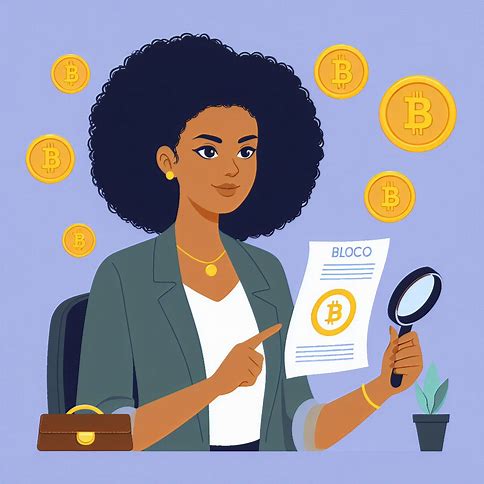Trading cryptocurrency can be exciting but also risky at the same time. By following important safety and security measures, you can protect your assets and trade with greater confidence. Here are the safest ways to trade cryptocurrency in 2024
1. Choose a Reputable Exchange
One of the most important factors in trading crypto safely is using a trustworthy, well-established exchange. Look for exchanges that:
- Have a proven track record and positive user reviews
- Comply with relevant regulations and licensing requirements
- Use security like two-factor authentication (2FA) and cold storage of assets
- Offer 24/7 customer support
Some of the most reputable crypto exchanges include Coinbase, Kraken, Gemini, and Binance. Do your own research to find the exchange that best fits your needs.
2. Secure Your Accounts
Once you’ve chosen an exchange, it’s critical to properly secure your account. Steps to take include:
- Use a strong, unique password for your exchange account
- Enable 2FA using an authenticator app or hardware security key
- Whitelist withdrawal addresses to limit withdrawals to pre-approved wallets
- Consider using a separate, secure email for your exchange account.
3. Use a Hardware Wallet for Long-Term Holding
If you plan to buy and hold cryptocurrency for the long-term, it’s safest to transfer it off the exchange to your own wallet that you control the private keys for.
Hardware wallets like the Ledger Nano or Trezor provide the highest level of security.
A hardware wallet is a physical device that stores your private keys offline. When you want to transact, you connect the hardware wallet to your computer, enter a PIN, and confirm the transaction on the device’s screen.
Storing cryptocurrency on a hardware wallet ensures it can’t be hacked or stolen, even if your computer is compromised.
Just be sure to keep your hardware wallet in a safe place and never share the recovery seed phrase with anyone.
Related: 10 Tools You Must have as a Crypto Trader
4. Use a Secure Connection
When accessing your exchange account or making trades, always use a secure network connection.
Avoid using public Wi-Fi networks, as these can be easily compromised by hackers looking to steal sensitive information.
Instead, use a trusted private network, ideally with a virtual private network (VPN) for added security.
A VPN encrypts your internet traffic, making it much harder for anyone to intercept or spy on your online activity.
5. Enable Withdrawal Confirmations and Limits
Most reputable exchanges allow you to set up withdrawal confirmations and daily withdrawal limits.
These features add an extra layer of security to prevent unauthorized withdrawals from your account.
With withdrawal confirmations enabled, you’ll need to approve any withdrawal request via email or other means before it’s processed.
Daily withdrawal limits restrict the amount of funds that can be taken out of your account within a 24-hour period.
6. Keep Your Device Secure
In addition to securing your exchange accounts, it’s important to keep the device you use for trading secure as well. This includes:
- Keeping your operating system, antivirus software, and other programs up-to-date with the latest security patches
- Using a reputable antivirus and anti-malware program
- Avoiding downloading suspicious files or clicking on links from unknown sources
- Encrypting your device’s hard drive
- Enabling password or biometric locks on your device
7. Be Wary of Phishing Scams
Phishing is a common tactic used by scammers to trick you into revealing your login credentials or other sensitive information.
Be extremely cautious of any unsolicited emails or messages claiming to be from your exchange or wallet provider.
Always verify the sender’s address and never click on any links or download any attachments from suspicious emails.
If in doubt, go directly to your exchange’s website by typing the URL into your browser.
Related: How to Withdraw Cryptocurrency from A Crypto Wallet
8. Use Multiple Wallets and Exchanges
Another way to mitigate risk is to spread your cryptocurrency holdings across multiple wallets and exchanges. This helps protect you in case any single wallet or exchange is compromised.
You might consider using one exchange for trading and another for long-term storage, for example.
Or use a combination of hardware and software wallets to store different amounts of crypto based on how frequently you need to access them.
9. Keep Your Investment Amounts Reasonable
It’s important to invest only what you can afford to lose. Cryptocurrency prices are highly volatile and the market can be unpredictable.
By keeping your investment amounts reasonable, you limit your exposure to potential losses.
A good rule of thumb is to invest no more than 5-10% of your overall portfolio in cryptocurrency.
This allows you to participate in the market’s potential upside without risking your entire financial future.
10. Stay Informed and Educate Yourself
The cryptocurrency space is constantly changing, with new technologies, regulations, and best practices emerging all the time.
To stay safe, it’s quite necessary to educate yourself and keep up with the latest developments.
Follow reputable industry news sources, participate in online forums and communities, and don’t be afraid to ask questions.
The more you understand about cryptocurrency and trading, the better equipped you’ll be to make smart, safe decisions.
11. Have a Backup Plan
No matter how careful you are, there’s always a chance something could go wrong. That’s why it’s crucial to have a backup plan in place.
This includes things like:
- Keeping a secure backup of your wallet’s private keys and recovery seed phrase
- Having a plan for how your loved ones can access your crypto in the event of an emergency
- Knowing what steps to take if your exchange account or wallet is compromised
By planning ahead and being prepared for the unexpected, you can minimize the potential impact of any security incidents.
12. Consider Using a Reputable Trading Bot
For some traders, using a trading bot can be a way to automate their strategy and potentially reduce risks. A trading bot is software that executes trades based on pre-programmed rules and algorithms.
Reputable trading bots can help enforce disciplined trading strategies, limit emotional decision-making, and react faster than humans to changing market conditions.
Key Takeaways:
1. Use reputable exchanges with strong security measures and regulatory compliance
2. Secure your accounts with strong passwords, 2FA, and whitelisted withdrawal addresses
3. Store long-term holdings in a hardware wallet that you control the private keys for
4. Always use a secure network connection, ideally with a VPN
5. Enable withdrawal confirmations and daily limits on your exchange accounts
6. Keep your trading device secure with up-to-date software, antivirus protection, and disk encryption
7. Be extremely wary of phishing attempts and never share login credentials
8. Spread holdings across multiple wallets and exchanges to mitigate risk
9. Invest only what you can afford to lose and keep crypto a reasonable portion of your overall portfolio
10. Educate yourself continuously and stay up to date on industry best practices
11. Have backups and a plan in place for worst-case scenarios
12. Carefully vet any trading bots and start with small amounts
13. By implementing these key safety practices and staying vigilant, you can significantly reduce your risks when trading cryptocurrency.
14. The security of your assets should always be the top priority.
Frequently Asked Questions
Here are some frequently asked questions about safely trading cryptocurrency:
1. What is two-factor authentication (2FA) and why is it important?
Two-factor authentication adds an extra layer of security to your accounts by requiring a second form of verification, in addition to your password, to log in.
This can be a code from an authenticator app, a physical security key, or a biometric factor like a fingerprint. 2FA helps protect your accounts even if your password is compromised.
2. What’s the difference between a hot wallet and a cold wallet?
A hot wallet is connected to the internet, like a wallet on a cryptocurrency exchange. This makes it convenient for trading, but also more vulnerable to hacking. A cold wallet, on the other hand, is offline.
Hardware wallets and paper wallets are examples of cold wallets. They offer superior security for long-term storage but are less convenient for frequent trading.
3. How do I create a strong password?
A strong password should be at least 12 characters long, and include a mix of upper and lowercase letters, numbers, and symbols.
Avoid using easily guessed words or personal information. Consider using a password manager to generate and store complex passwords securely.
4. What should I do if my exchange account is hacked?
If you suspect your exchange account has been compromised, immediately change your password and enable 2FA if you haven’t already.
Contact the exchange’s support team to report the issue and follow their recommended steps. If any funds are stolen, you may need to contact law enforcement as well.
5. Can I insure my cryptocurrency holdings?
While traditional insurance companies have been slow to cover cryptocurrency, there are some options emerging.
Certain exchanges, like Coinbase and Gemini, insure user funds held in their hot wallets. For self-custody wallets, companies like Nexus Mutual offer insurance products. However, insurance in the crypto space is still limited.
What’s a hardware wallet and do I need one?
A hardware wallet is a physical device, usually a USB drive, that stores your cryptocurrency’s private keys offline. Examples include the Ledger Nano and Trezor.
Hardware wallets offer the highest level of security for long-term storage of cryptocurrency. Whether you need one depends on the amount of crypto you hold and your risk tolerance.
6. How do I spot a crypto scam?
Be wary of any unsolicited offers, promises of guaranteed returns, or high-pressure sales tactics. Legitimate crypto projects will have whitepapers, open-source code, and a transparent team.
Scam projects often have anonymous teams, plagiarized whitepapers, and unrealistic promises. Always thoroughly research any project before investing.
7. What’s the safest way to trade cryptocurrency?
The safest way to trade cryptocurrency is to use a reputable exchange, secure your accounts with strong passwords and 2FA, and practice good digital hygiene.
Only invest what you can afford, and consider using hardware wallets for long-term storage.










